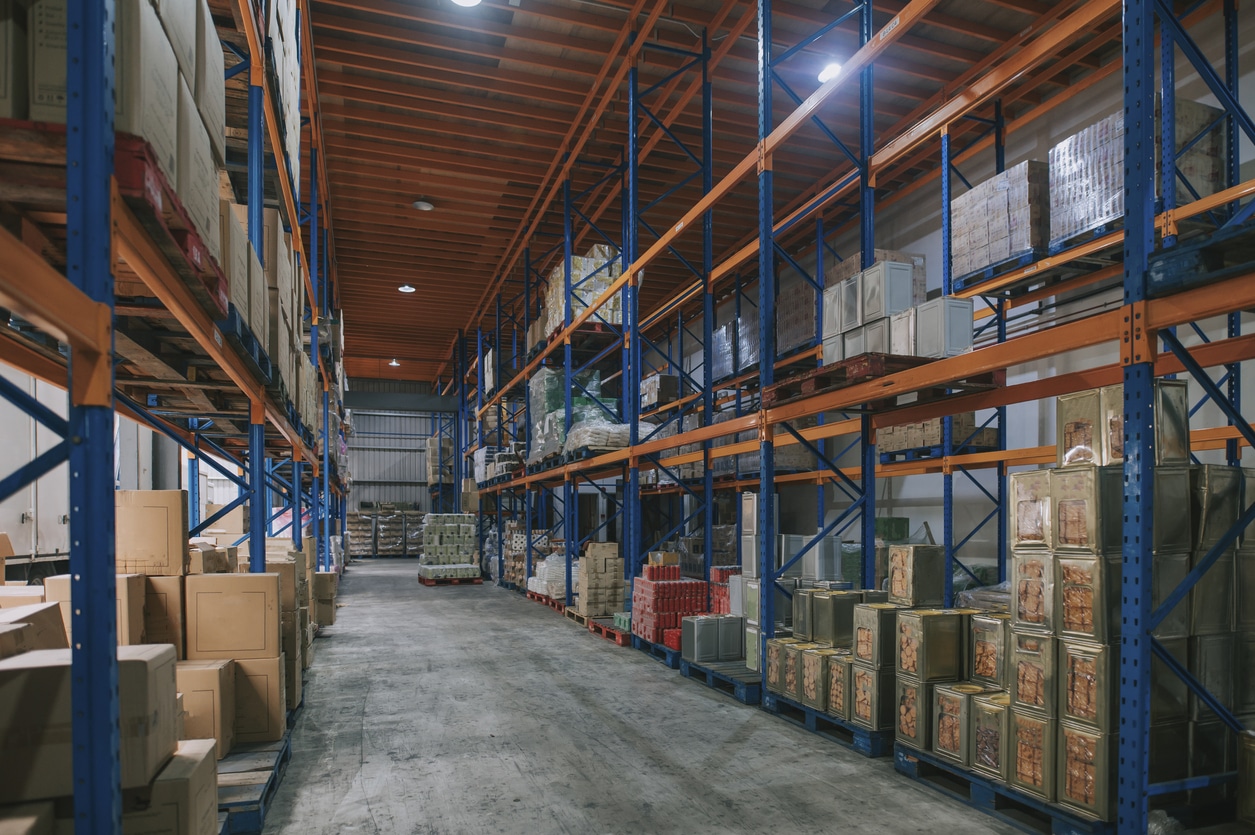Walmart Fulfillment Services vs. Fulfillment By Amazon
Which is better for your ecommerce brand?

The two big retailers, Walmart and Amazon, are struggling to become the go-to place for online shopping and commerce.
When Amazon launched its Fulfillment Service by Amazon (FBA) service in 2006, it changed the game for all sellers with this new model, making it the only ecommerce platform that offered a program like this. However, in February of 2020, Walmart launched its own version of FBA—Walmart Fulfillment Services. WFS has a lot of similarities with FBA, offering sellers access to its warehousing and delivery infrastructure.
In this article, we'll review both fulfillment services and we’ll help you decide which service is more suitable for your business needs. In addition, we'll also look at Deliverr as a 3PL option.
WFS vs. FBA Under the Microscope
Here’s a high-level comparison of Walmart Fulfillment Service and Fulfillment Service by Amazon:
| Walmart Fulfillment Services (WFS) | Fulfillment by Amazon (FBA) | |
|---|---|---|
| 2020 Revenue | $524 billion. The retailer has higher revenue because of its business model, leveraging its brick-and-mortar stores in conjunction with digital shopping. | $386 billion. Owns about 40% of the e-commerce market. |
| Number of sellers | 124,755 | 1.5 million active sellers but no data as to how many sellers are under the FBA program. |
| Who can join these programs? | Only selected sellers. | Any seller who has an Amazon Seller account. |
| Do you need seller experience to start selling on the platform? | Yes, Walmart favors experienced sellers. | No. |
| Monthly fees | None. | Yes, $39.99 per month for the Professional Plan. |
| Any product restrictions? | Yes, limited size and weight. | No. |
| Maximum Shipment Weight | 30 lbs | 150 lbs |
| Maximum Product Dimensions | 25” x 20” x 14” | 108” longest side and 165” length + girth |
| Fulfillment Service Fees | Starts at $3.45. | Starts at $2.50. |
| Storage Fees | Q1-Q3: $0.75/cubic foot per month. Q4: $0.75/cubic foot per month for items stored for less than 30 days and $2.25/cubic foot per month for items stored for more than 30 days. |
Q1-Q3: $0.75/cubic foot per month for standard-size products and $0.48/cubic foot per month for oversize products. Q4: $2.40/cubic foot per month for standard-size products and $1.20/cubic foot per month for oversize products. |
| How are products stored? | Inventory is sorted by the seller. | Inventory gets commingled. |
| How many FCs do they have? | It has over 150 distribution centers but no data as to how many of these are fulfillment service centers. | 110 fulfillment service centers in the US and 185 centers globally. |
| Where is your inventory sent? | Ship to a single localization. | Ship to multiple fulfillment centers. |
| Product labeling | Doesn’t provide box labels or shipping labels. | Provides sellers with shipping labels. |
| Can you ship unbranded boxes? | Yes, updated as of 6th September. | Yes. |
| When sending your products | Items must be sent to WFS from within the US. | FBA accepts international shipments as long as the products are labeled. |
| What should you include in the product packaging? | Sellers need to specify their country of origin and must include UPCs on the product packaging. | Sellers must include Amazon’s ASIN label or UPC. |
| Is multichannel fulfillment available? | Yes, updated as of 6th. | Yes, Amazon can fulfill orders both within the Amazon FBA platform and through other channels. |
| Can you access different fulfillment service options? | No. | Yes, Subscribe & Save and Amazon Small & Light. |
| Do you need a US business Tax ID to set up the fulfillment seller account? | Yes. | No. |
| Do you need a W9/W8 and EIN Verification Letter that verifies your US business address? | Yes. | No. |
WFS vs. FBA Highlights
- Anyone can join the FBA program, but WFS limits entry to eligible sellers who meet specific requirements.
- FBA requires sellers to ship inventory to multiple fulfillment centers whereas Walmart sellers only have to ship to one fulfillment center.
- WFS only accepts shipments within the U.S. while FBA accepts international shipments.
- With FBA, you can sell products of all sizes but WFS has limited product dimensions and limited weight.
- Amazon offers cheaper fulfillment service fees than WFS.
- Storage fees are the same except for the last quarter of the year, where Amazon offers higher fees than WFS.
- When setting up a WFS account, you will need to have a lot of paperwork ready such as a US business tax ID and an EIN verification letter among other documents.
- Amazon provides sellers with shipping labels while WFS doesn’t.
- Amazon requires sellers to pay a recurring monthly fee in order to join the FBA program, but WFS doesn’t.
- FBA offers more fulfillment options and you can do multichannel but not with WFS.

Amazon vs. Walmart. What Is the Best Sales Channel for Ecommerce Sellers?
Amazon and Walmart compete not only in terms of fulfillment services but also in many other areas, such as fees and profitability.
Our article about Selling on Amazon vs. Walmart will provide an overview of these two retail juggernauts and explore their nuances from an ecommerce seller’s perspective. However, while we’ve determined which of the two is the overall winner when it comes to ecommerce, don’t forget that you can use both.
A 3PL Option: Deliverr
Deliverr is a direct-to-consumer ecommerce fulfillment company based in San Francisco. It’s a popular choice for small to medium-sized businesses who want to ship their products fast because of its 2-day delivery.
Deliverr integrates into Amazon and Walmart, so if you’re looking for a 3PL option, it’s worth checking out. However, as of writing, Deliverr can’t send inventory to FBA and supports only FBM. But it’s scheduled to roll out the FBA feature in Q2 of 2022.
| Fulfillment fee | Starts at $4.15 per unit |
| Storage fee | Starts at $0.025 per cubic foot, per day (from January through September) and Starts at $0.080 per cubic foot, per day (from October through December) |
| Can you ship unbranded boxes? | No |
| Maximum Product Dimensions | Longest side 40″ or less Median side 30″ or less Shortest side 15″ or less |
| Maximum weight allowed per box | 50 lbs or less |
| No. of warehouses in the United States | 80+ |
| Supports returns? | No. But the feature is expected to roll out soon. |
| Supports international shipping? | Yes |
One of the more significant advantages of Deliverr is its 2-day shipping badge that makes your listing more prominent and can lead to better conversions.
To know how much you’ll be paying if you use Deliverr, you can access their Cost Calculator here.
Conclusion
Before 2020, selling on Walmart wasn’t an option for many sellers because the marketplace didn't offer logistics and warehousing services. However, the launch of WFS changed everything, and now there’s a competitive alternative to FBA — but only for selected sellers.
Walmart is winking at its competitors with WFS, but there is a big important disadvantage in this service and it's that it only accepts shipments from within the US for now. So for now, Amazon’s FBA is still the one to beat.
What are your experiences with WFS and with FBA? Which one is more suitable for your business? Leave a comment below.




I can’t answer that yet. No experience with either yet
I have used Amazon Fba i feel that this service is expensive then wfs . So the profit margin is less the wfs